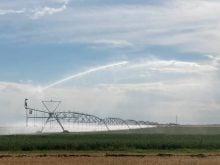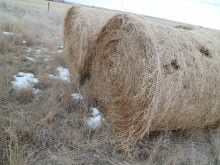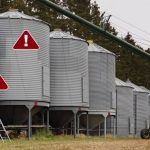Derek Foss, a third-year agronomy student at the University of Saskatchewan, figures he knows where the jobs are.
“I’ll be trying to get a job in sales or as an agrologist,” he said.
Foss worked during the past two summers for a Calgary-based chemical company which manufactures seed protectants. “If you get a job in the summer with a company, they kind of teach you everything about the real-world practices of your education.”
Foss may not be a dedicated student of employment cycles, but he has it right.
Read Also

Rich life took him from sky to ground
World War II veteran Burns Wood shares some memories of his time on the Alberta Sugar Beet Growers board as the organization celebrates its 100th anniversary in 2025.
The farm supply sector is the best prospect right now for soon-to-graduate agricultural school students. In other years, it might be the farm finance sector. A few even will look back at the farm as a prospect.
“The market would dictate what’s available (job-wise),” says Lyle Elmgren, an administrative assistant at the University of Saskatchewan’s College of Agriculture.
Every year, Elmgren does a survey of graduates to find out what they are doing and how they are
using their education.
Over the past three years, there has been a noticeable shift in where graduates have ended up.
Lately, there has been an increase in the number of graduates employed in the farm supply sector, selling such products as machinery or fertilizer. In fact, industry demand for graduates is higher than supply, said Elmgren.
Scott Elliot, the chair of the agriculture/food business management program at the University of Alberta, has noted the same trend, based on reports from former students.
He said the majority appears to have found jobs in the supply industry.
“If the job market is such that the supply jobs are there, then they are more likely to at least consider off-farm employment,” said Jeffrey.
During the past nine years, only 13 percent of University of Saskatchewan graduates have taken up farming.
“The market condition is a factor,” said Alain Gagnon, marketing manager for the Royal Bank of Canada’s agriculture and agri-business national office in Winnipeg. “The other factor is the job opportunities.”
Elmgren said it is a cyclical process. If market prices fall and the farm economy falters, students will search for jobs in the financial or banking sectors. When farm prices are good, students are more likely to find work in the sales industry.
And of course, the farm remains an option.
Back on campus in Saskatoon, Foss figures even if he does not land the industry job he wants, his diverse education should help him make a living.
“I can always use the knowledge that I got from university on the farm,” he said.














